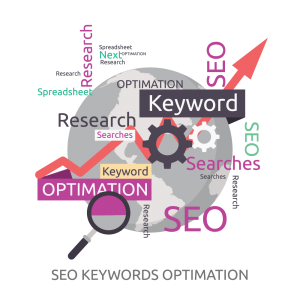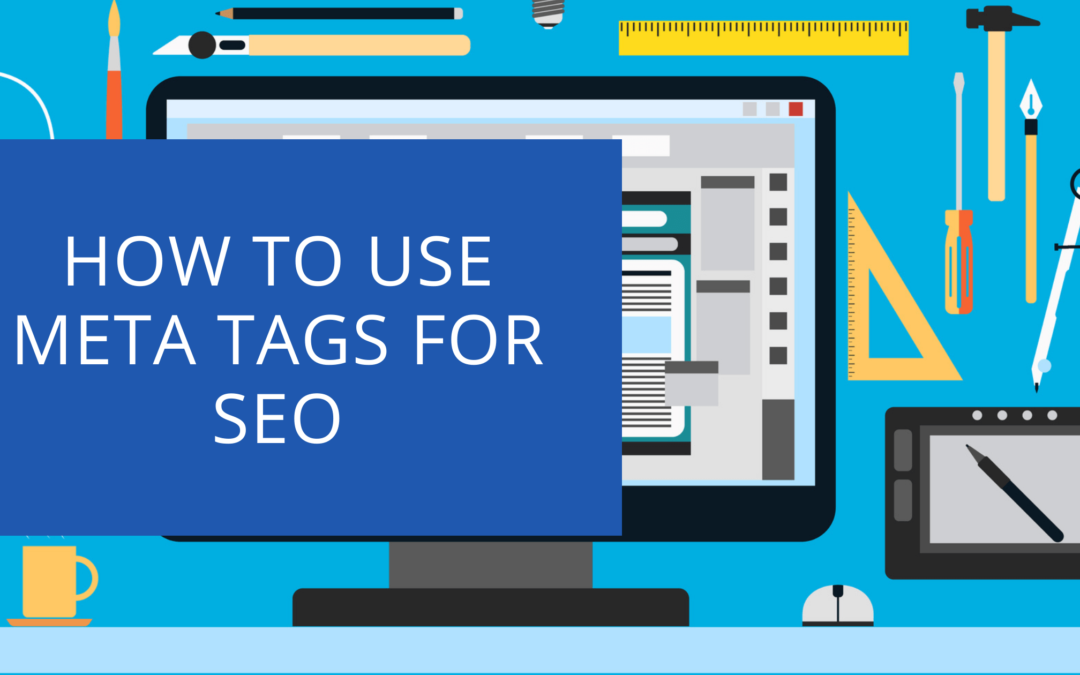When creating a website, it is important to consider how you will optimise it for search engines. One of the most effective ways to do this is through the use of meta tags.
Meta tags are pieces of information that you add to your website’s code that help search engines understand what your site is about.
In this blog post, we will discuss how to use meta tags for SEO and provide some tips on how to optimise them. So, if you are looking to improve your website’s ranking in search engine results pages (SERPs), read on!
Contents
Meta tags are pieces of information that you add to your website’s code to help search engines understand what your site is about. There are many different meta tags, but the most impactful ones for SEO are the title tag and meta description.
 The title tag is the first thing that search engines see when they crawl your website. It tells them what your page is about and helps them determine whether it is relevant to the user’s query.
The title tag is the first thing that search engines see when they crawl your website. It tells them what your page is about and helps them determine whether it is relevant to the user’s query.
The meta description provides a summary of your page and can also be used by search engines to generate results pages.
When you create a website, you should include these meta tags in the code for each page. You can do this using an HTML editor, or if you are using a content management system (CMS), there will usually be an option to add meta tags or you can use an SEO plugin like Yoast SEO.
The title tag and meta description should be placed in the head section of your website’s code.
There are a few things you can do to optimise your meta tags for better SEO:
- Make sure the title tag is around 50-60 characters long. Any longer and it will be truncated in search engine results pages.
- The meta description should be between 150-160 characters long.
- Use keyword phrases in both the title tag and meta description. This will help to improve your ranking for those keywords.
- Avoid using too many keywords, as this can look spammy to search engines. Try to focus on one main keyword and two or three related keywords per page.
- Do not duplicate the same meta tags on different pages of your website. Each page should have its own unique set of meta tags.
Meta tags not only help with SEO, but can also be beneficial for website traffic and conversions.
 The title tag is a great place to include your company’s branding and can help to increase click-through rates from search engine results pages. The meta description can also be used to generate interest in your site and encourage visitors to click through to your page.
The title tag is a great place to include your company’s branding and can help to increase click-through rates from search engine results pages. The meta description can also be used to generate interest in your site and encourage visitors to click through to your page.
If you are using an eCommerce website, the meta description can be used as a call to action (CTA) to encourage people to buy products or services. It can also be used to highlight special offers or discounts that are available on your site.
Important Meta Tags for SEO
- Title: The title tag is the first thing that search engines see when they crawl your website. It tells them what your page is about and helps them determine whether it is relevant to the user’s query.
- Description: The meta description provides a summary of your page and can also be used by search engines to generate results pages. When you create a website, you should include this meta tag in the code for each page.
- Robots: The robots meta tag tells search engines whether or not they should index your website and its pages. You can use this to prevent certain pages from being indexed, or to stop the entire website from being indexed. You can also use the robots meta tag to set nofollow on the link on the page.
- Content-type: The content-type meta tag tells browsers what type of document the page is. This is important because it can help to ensure that your pages are rendered correctly.
- Canonical: The canonical meta tag tells search engines which version of a page they should index. This is useful if you have multiple versions of a page, or close variations of a page, such as a mobile and desktop version. You can use the canonical meta tag to tell search engines which version to index.
- Social Media: The social media meta tags allow you to control how your website is displayed when it is shared on social media platforms. You can use these tags to set the image, headline, and description that will be used when your website is shared.
- Viewport: The viewport meta tag tells browsers how to display the page on mobile devices. You can use this to make sure that your website is responsive and looks good on different screen sizes.
- Site verification: The site verification meta tag allows you to verify your website with Google, Bing, and Yahoo. This tells search engines that you are the owner of the website and can help to improve your ranking in their search results pages.
- Language: The language meta tag tells browsers the language of the website. This is important because it can help to ensure that your website is displayed correctly in different countries.
- Cache-control: The cache-control meta tag tells browsers how long they should store the page in their cache. This can be used to improve website performance by reducing the number of requests that need to be made to the server.
SEO Meta Tag FAQ
What is the title tag?
The title tag is the first thing that search engines see when they crawl your website. It tells them what your page is about and helps them determine whether it is relevant to the user’s query.
What should I include in my meta description?
 The meta description provides a summary of your page and can also be used by search engines to generate results pages. When you create a website, you should include this meta tag in the code for each page.
The meta description provides a summary of your page and can also be used by search engines to generate results pages. When you create a website, you should include this meta tag in the code for each page.
What is the content-type meta tag?
The content-type meta tag tells browsers what type of document the page is. This is important because it can help to ensure that your pages are rendered correctly.
How do I verify my website with Google, Bing, and Yahoo?
You can use the site verification meta tag to verify your website with Google, Bing, and Yahoo. This tells search engines that you are the owner of the website and can help to improve your ranking in their search results pages.
What is the language meta tag?
The language meta tag tells browsers the language of the website. This is important because it can help to ensure that your website is displayed correctly in different countries.
The social media meta tags allow you to control how your website is displayed when it is shared on social media platforms. You can use these tags to set the image, headline, and description that will be used when your website is shared.
Conclusion
Meta tags are an important part of SEO and can be used to improve your website’s ranking in search engine results pages. They can also be used to generate interest in your site and encourage visitors to click through to your page.

